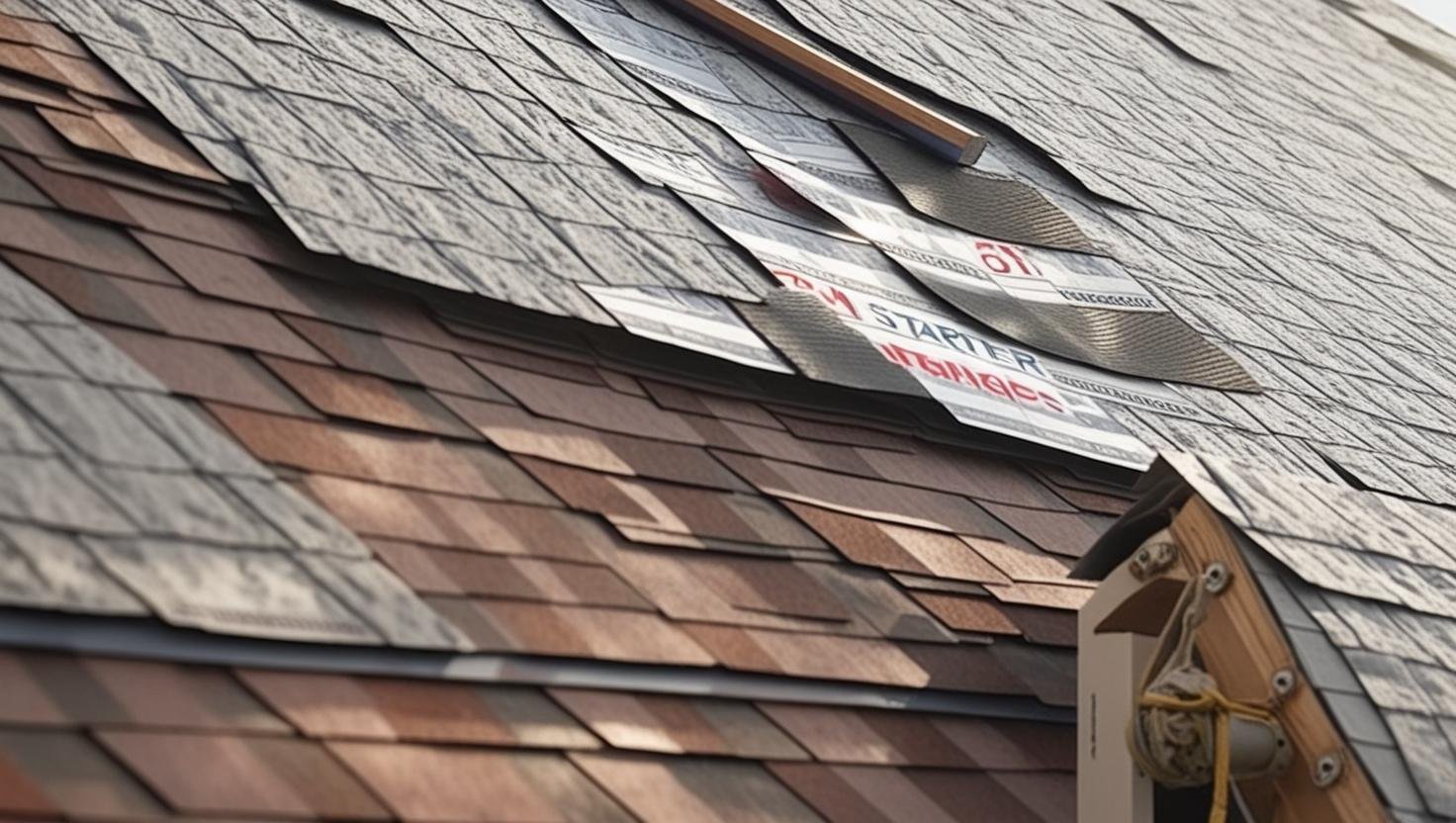What Is Roof Underlayment? Reveal the Secret to Durability
Table of Contents
ToggleIntroduction
When most homeowners think about their roof, the first thing that usually comes to mind is the shingles. But what many don’t realize is that beneath those shingles lies a critical layer that plays a huge role in protecting your home—roof underlayment. This hidden but essential component sits between the shingles and the roof deck, offering an extra layer of defense against wind, rain, snow, and even UV rays.
With over three decades in the roofing industry, I’ve seen firsthand how much difference the right underlayment can make. Whether you’re facing a simple repair or a full roof replacement, understanding this often-overlooked part of your roofing system is key to making informed decisions that will safeguard your home for the long haul.
What Exactly Is Roof Underlayment?
Roof underlayment is a water-resistant or waterproof barrier installed directly onto the roof deck before the shingles go on. Think of it as a backup layer—if your shingles are ever damaged or dislodged, the underlayment helps keep moisture from getting into the structure of your home.
Underlayment materials typically include:
- Asphalt-saturated felt (the classic option)
- Synthetic polymers like polypropylene or polyester
- Rubberized asphalt for maximum waterproofing
Its job? To help prevent leaks, protect against mold, and improve your roof’s lifespan. Properly installed, underlayment also provides a smoother surface for shingle application and plays a big part in energy efficiency by adding insulation.
Roofing experts and organizations like the National Roofing Contractors Association (NRCA) and Canadian Asphalt Shingle Manufacturers Association (CASMA) highly recommend underlayment not only for performance but also to meet building code and warranty requirements.
Types of Roof Underlayment
Choosing the right underlayment can be a game-changer for your roof’s performance and longevity. Here’s a breakdown of the most common types:
1. Asphalt-Saturated Felt (Felt Paper)
This traditional option—often called tar paper—is made with an organic or fiberglass mat saturated in asphalt.
- ✅ Pros: Affordable, widely available, breathable
- ❌ Cons: Prone to tearing, absorbs moisture, short lifespan, not UV-resistant
It comes in two common weights:
- 15 lb – thinner, easier to install
- 30 lb – thicker, more durable for steeper roofs or harsh climates
While it’s not as durable as newer options, it remains a cost-effective solution for many homeowners, especially in drier regions.
2. Synthetic Underlayment
A newer alternative, synthetic underlayment is made from materials like polypropylene or polyester. It’s become a favorite among roofing professionals thanks to its lightweight, tear-resistant, and UV-resistant properties.
- ✅ Pros: Durable, easy to install, great water resistance, holds fasteners well
- ❌ Cons: Slightly more expensive than felt
It’s a solid choice for homes in areas with heavy rain, snow, or strong sun, and works especially well on steep-slope roofs due to its excellent grip and reduced risk of slipping during installation.
3. Rubberized Asphalt Underlayment
The most premium option, rubberized asphalt blends asphalt with rubber polymers, offering true waterproofing. Many versions are self-adhering, making them easy to apply and incredibly effective at sealing around nails and fasteners.
- ✅ Pros: Fully waterproof, UV-resistant, self-sealing, long lifespan
- ❌ Cons: Higher cost, heavier, usually requires professional installation
This type is ideal for regions with ice dams, frequent storms, or heavy rainfall. It can last up to 50 years with proper care.
Top Brands to Consider
Well-known brands like GAF offer a wide range of reliable underlayment products:
- Deck-Armor™: Breathable and mold-resistant for high-moisture environments
- Tiger Paw™: UV-stabilized, moisture-managing synthetic underlayment
- FeltBuster®: A modern synthetic alternative to traditional felt
- Shingle-Mate®: Reinforced felt that lies flat and resists wrinkling
- VersaShield®: Offers extra fire resistance along with waterproofing
These options are engineered for specific needs and can enhance the performance of nearly any roofing system.
How to Choose the Right Underlayment
A few key things should guide your choice:
- Climate: Rubberized asphalt for wet or icy areas; synthetic for variable weather
- Roof slope: Steep roofs benefit from lightweight synthetic; flatter roofs need waterproofing
- Budget: Felt is cost-effective, synthetic is mid-range, and rubberized asphalt is premium
- Installation: DIY-friendly options like synthetic are great for simple projects
- Building code: Some regions require specific underlayment types to meet local regulations
Pro tip: always consult a licensed roofing contractor to match the right product to your home’s specific conditions.

Choosing Underlayment Based on Roofing Material
Not all roofing materials pair best with the same type of underlayment. The ideal choice depends not only on climate or budget but also on the type of roofing material being installed. Matching the right underlayment to your roofing system ensures maximum performance, protection, and lifespan.
1. Asphalt Shingles
- Best Underlayment: Synthetic or felt
- Why: Asphalt shingles are the most common residential roofing option. Synthetic underlayment offers superior durability and water resistance, especially in areas with high winds or frequent storms. Felt is a cost-effective alternative for lower-risk environments.
2. Metal Roofing
- Best Underlayment: Synthetic or rubberized asphalt
- Why: Metal roofs conduct more heat and can cause condensation underneath. A high-temperature-rated underlayment, like rubberized asphalt or synthetic with thermal resistance, is essential to prevent moisture buildup and corrosion of the metal panels.
3. Tile Roofing (Clay or Concrete)
- Best Underlayment: Rubberized asphalt
- Why: Tile roofs are heavy and can last decades, so the underlayment must be equally durable. Rubberized asphalt provides long-term waterproofing and resilience to extreme weather and heat.
4. Wood Shakes
- Best Underlayment: Breathable synthetic or felt
- Why: Wood needs to breathe to prevent rot. A breathable underlayment allows for moisture escape while still offering protection from external water intrusion.
5. Slate Roofing
- Best Underlayment: High-performance synthetic or rubberized asphalt
- Why: Like tile, slate is long-lasting and heavy. Premium synthetic or rubberized asphalt underlayment is necessary to support its longevity and withstand harsh weather conditions.
Why Is Roof Underlayment So Important?
Underlayment is far more than a backup—it’s your roof’s second line of defense. When shingles blow off or degrade, the underlayment helps stop water from soaking into your home’s frame and causing serious issues like rot, mold, or even structural damage.
Here’s what it brings to the table:
- Protection against leaks and ice dams
- Improved energy efficiency and insulation
- Compliance with local building codes
- Peace of mind—especially during storms
In short, without underlayment, your roof is left vulnerable.
Benefits of Roof Underlayment
1. Weather Protection
Underlayment keeps wind-driven rain, snow, and ice from reaching your roof deck—even when shingles fail. It’s your weatherproof shield.
2. Better Insulation
Many underlayments help regulate temperature, keeping your home cooler in summer and warmer in winter—saving you money on energy bills.
3. Enhanced Durability
By adding an extra layer of protection, underlayment extends the lifespan of your roof and protects it from wear and tear.
4. Smoother Installation
It creates a stable surface for shingles, especially on uneven roof decks. This reduces the chance of shingle movement or misalignment.
5. Noise Reduction
Some underlayments absorb sound—handy if you’re in a noisy neighborhood or during heavy rainstorms.
Which Underlayment Is the Most Durable?
If durability is your top concern, synthetic underlayment is your best bet. Here’s why:
- Holds up better against UV rays, moisture, and extreme temperatures
- Resistant to tearing, wrinkling, and punctures
- Requires fewer fasteners and has fewer seams, reducing leak points
- Long-lasting and easier to install than felt
Felt underlayment, while budget-friendly, absorbs water, tears more easily, and degrades faster—especially in harsh conditions. Rubberized asphalt is the most waterproof and longest-lasting, but also the most expensive.
Maintaining Your Roof Underlayment: Why It Matters
Even the best roof underlayment can’t do its job if it’s overlooked after installation. Just like shingles or flashing, your underlayment benefits from regular maintenance and inspections, especially after severe weather or over time as your roof ages.
1. Periodic Roof Inspections
Scheduling a roof inspection at least once a year, or after a major storm, can help detect early signs of damage. While underlayment is hidden beneath shingles, telltale signs like:
- Curling or missing shingles
- Water stains in your attic
- Musty smells or visible mold
…can indicate your underlayment may have been compromised.
2. Watch for Sagging or Leaks
If water is getting through to your decking, it could mean that both your outer roofing layer and underlayment have been breached. Early intervention can prevent more serious damage such as rot, mildew, or even structural failure.
3. Timely Repairs = Long-Term Savings
When roofing contractors catch underlayment damage early, they can often make targeted repairs rather than replacing your entire roof. This not only preserves the roof deck but also saves you from costly long-term issues.
4. Keep Gutters Clear
Clogged gutters can cause water to pool on your roof, increasing the chance of water seeping past the shingles and reaching the underlayment. Keeping them clean helps your entire roofing system—underlayment included—function properly.
Conclusion
Your roof is only as strong as the layers beneath it. Roof underlayment might not be visible, but it’s one of the most important components of a weatherproof, long-lasting roof.
Whether you go with felt, synthetic, or rubberized asphalt, make sure the material fits your climate, roof type, and budget. Investing in the right underlayment now can save you from major repairs later—and keep your home dry, comfortable, and protected for years to come.
If you’re unsure where to start, talk to a reputable roofing contractor. They can walk you through your options and help make sure your roof is built to stand the test of time.
what is roof underlayment (FAQs)
1. What is the main purpose of roof underlayment?
Roof underlayment serves as a secondary protective layer beneath your shingles, shielding the roof deck from moisture, leaks, and weather damage. It acts as a backup defense in case the top layer of roofing is compromised.
2. How long does roof underlayment last?
The lifespan depends on the material:
- Felt underlayment: 10–20 years
- Synthetic underlayment: 25–35 years or more
- Rubberized asphalt: Up to 50 years
Proper installation and maintenance can significantly impact longevity.
3. Is underlayment required by building codes?
Yes. Most local building codes require underlayment as part of a complete roofing system. Additionally, many roofing manufacturers require it to maintain product warranties, making it both a regulatory and practical must.
4. Can you install a new underlayment without replacing the entire roof?
In rare cases, underlayment can be partially replaced during a repair, but because it lies beneath shingles, full replacement usually requires removing and reinstalling the outer roofing material. It’s often more efficient to address both together.
5. What’s the best underlayment for areas with heavy rain or snow?
For regions with extreme weather, rubberized asphalt underlayment or premium synthetic options offer the best protection. They’re waterproof, resistant to tearing, and handle ice dams and water buildup effectively.



